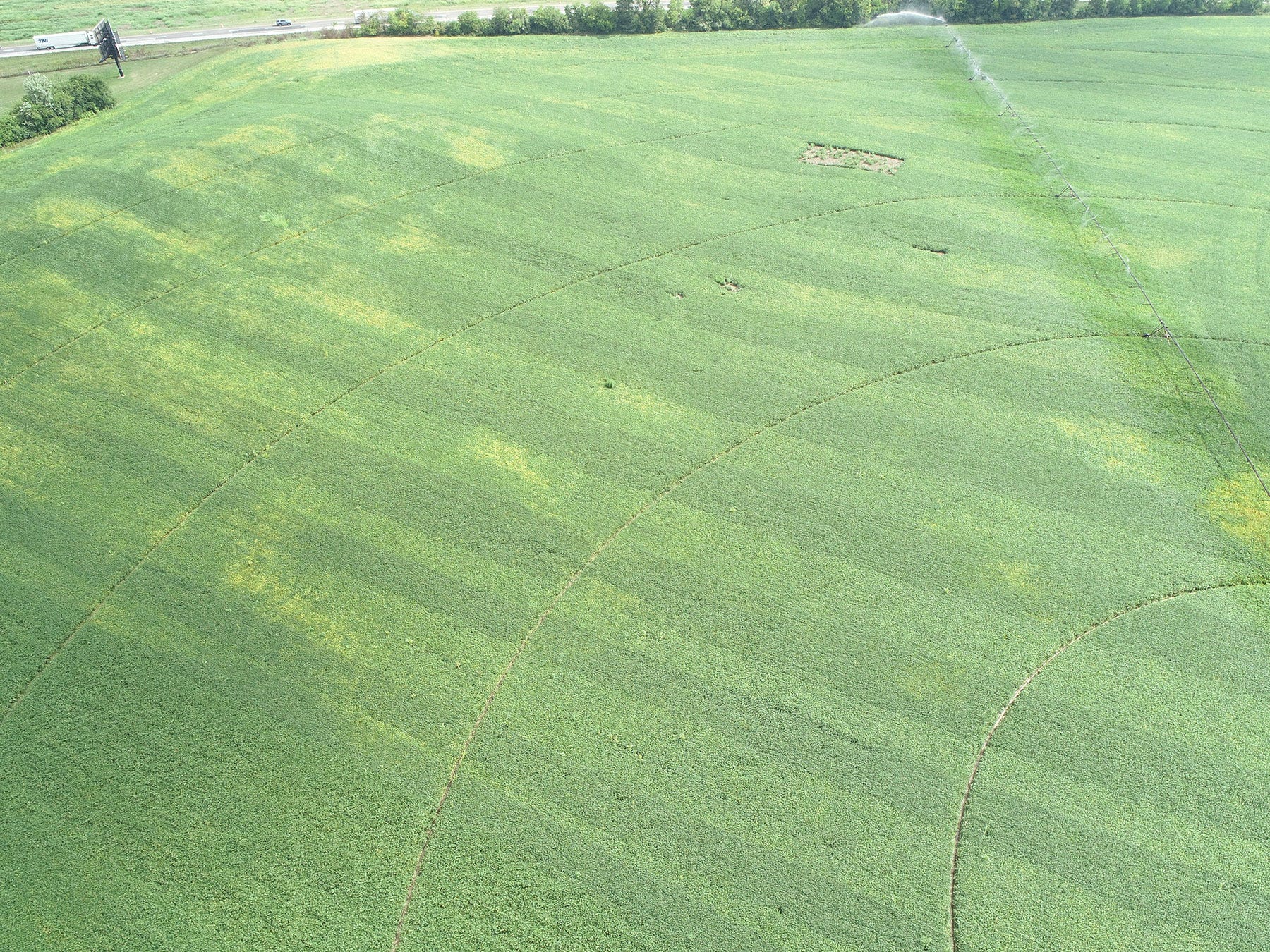
You want to know the best reason to fly a drone over your crop fields at various times each summer? The images produced can help explain what happened in that field in that particular year. The drone’s camera does not lie — those images tell the truth every time. And the record of the season you can build from drone images far outruns your memory for accuracy.
Here’s an example from the Soybean Watch ’23 field that proves the point. “We mainly walked the left half of the field during scouting visits, simply because it was more easily accessible,” explains Steve Gauck, a regional agronomy manager for Beck’s, sponsor of Soybean Watch ’23. “That was sufficient for our purposes. If you were doing actual scouting and making recommendations, you would want to walk into every corner of the field.”
So, Gauck was somewhat surprised when he looked at images from a drone flight in very late July.
“There was an obvious pattern on the right side of the field,” he recalls. “There were alternating strips of soybeans that varied somewhat in color and appearance. The obvious answer was that the operator planted two varieties, one on one side of the planter and a second variety on the other side.”
Monkey wrench
However, the landowner threw a monkey wrench into Gauck’s conclusion when he checked his written records and discovered that there was nothing marked about two different varieties planted side by side there. It was puzzling, Gauck says, largely because differences were obvious in the drone image.
“We began examining other possible causes,” Gauck explains. “I did see a case once where depth was deeper on one side of the planter than the other. It resulted in differences in rate of growth in that field. Still, the best explanation seemed to be that there were two varieties planted side by side.
“We will know when fall comes,” Gauck insisted, as far back as early August. Sure enough, by mid-September, there was no doubt. One variety was considerably farther along on maturity than the other.

PROOF POSITIVE: As soybeans matured, there were obviously two varieties planted side by side here. The grower and employee determined there were different varieties in the two compartments of the seed tender.
The grower had already consulted his written field records a second time — no mention of using two varieties. But when differences in maturity appeared, he and his employee put their heads together again. After some serious memory recall, they concluded that the employee filled the planter on that side of the field with beans from side-by-side compartments in the seed tender. He thought they were the same variety, but he and the grower finally determined they were not. The drone image certainly verified that conclusion.
“We have so many ways to record what happens in a field today,” Gauck concludes. “A drone with a camera is just another tool to help track and record what happens during the season.”
About the Author(s)
You May Also Like




